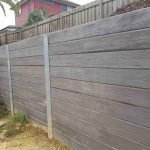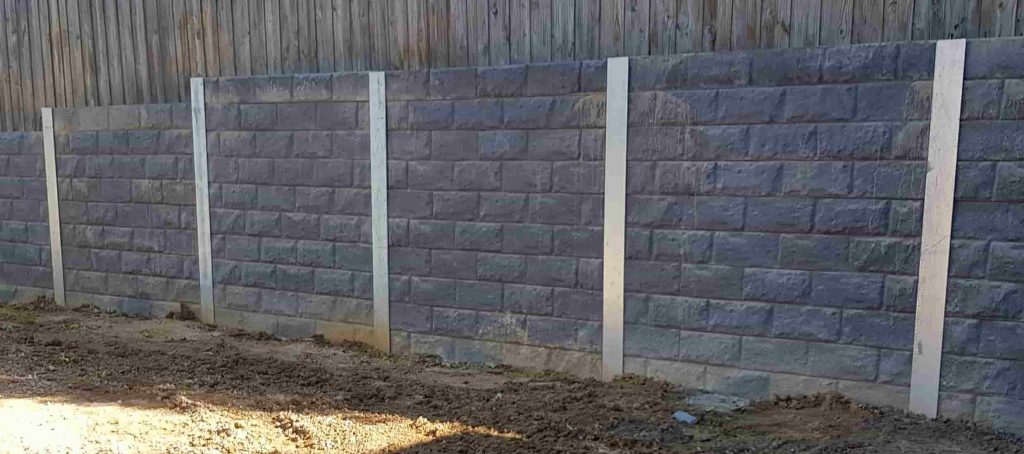Introduction
When it comes to landscaping and building, one area that frequently gets neglected is the importance of appropriate retaining wall setup. Whether you're handling timber sleeper walls, concrete sleeper structures, or H beam systems, the significance of experience can not be overstated. In this post, we're diving deep into The Importance of Experience in Retaining Wall Installation Projects We'll explore why employing a professional with proficiency in this field can conserve you time, money, and a whole lot of headaches.
The Significance of Experience in Retaining Wall Setup Projects
Retaining walls serve a critical function in landscape architecture; they hold back soil and avoid disintegration while likewise improving the visual appeal of your residential or commercial property. However, the underlying mechanics are anything but easy. Without correct setup by a skilled professional, these structures can fail dramatically. Experienced professionals comprehend the nuances included-- from product choice to drainage systems-- ensuring that your wall not just stands the test of time however also performs its designated function flawlessly.
Why Pick Timber Sleeper Walls?
Timber sleeper walls are an appealing choice for numerous house owners aiming to include a natural touch to their gardens. But why ought to you select this material over others?

Challenges with Wood Sleepers
While lumber has its advantages, it likewise presents challenges:
- Durability: Wood can rot and degrade gradually if not treated properly. Maintenance: Routine maintenance is required to maintain its look and structural integrity.
Understanding Concrete Sleeper Walls
Concrete sleeper walls have gotten tremendous popularity due to their toughness and durability. So what makes them a favored choice?
Strength: Concrete is naturally strong and able to hold up against substantial pressure. Low Maintenance: When set up correctly, these walls require very little upkeep. Versatility: Available in various styles and surfaces, concrete sleepers can fit any aesthetic.Common Problems with Concrete Sleepers
Even though concrete has its benefits, issues can still emerge:
- Cracking: Poor installation or inadequate drain can result in cracks over time. Weight Considerations: The heavy nature of concrete may need specific devices for transport and installation.
What Are H Beam Systems?
H beam systems use a contemporary solution for retaining walls that requires attention for their unique structure:

Possible Disadvantages of H Beams
While innovative, H beams are not without their restrictions:
- Cost Implications: They tend to be more expensive than both lumber and concrete options. Specialized Knowledge Required: Setting up H beams needs particular knowledge that not all contractors possess.
Experience Matters When Choosing Materials
The option between timber sleeper walls, concrete sleepers, or H beam systems isn't almost visual appeals; it has to do with what works best for your specific conditions.
Soil Type Consideration
Different types of soil respond in a different way under tension:
- Sandy soils drain pipes well but may not offer stability. Clay soils hold water which might increase pressure on keeping walls.
Professional installers evaluate soil structure thoroughly before continuing with any project.
Climate Conditions Influence Choices
Your regional environment plays a significant role in product choice:
- Areas vulnerable to heavy rains may require more robust drain solutions. Extreme temperatures could affect products differently; wood might warp while concrete might crack.
Drainage Solutions for Retaining Walls
Good drainage is vital for long-lasting retaining wall efficiency-- this is where a knowledgeable installer shines.
Types of Drain Systems
French Drains- A trench filled with gravel containing a perforated pipe that redirects water far from the wall.
- Small openings at the base of a wall permitting trapped water to escape safely.
- Fabric layers that help manage water circulation while preventing soil erosion behind the wall.
Consequences of Poor Drainage
Improper drainage causes hydrostatic pressure accumulation which can trigger substantial structural failure over time.
Local Laws and Permitting Needs
Another aspect where experience counts is navigating through regional regulations regarding retaining wall installations.
Understanding Zoning Laws
Before starting any job, familiarizing yourself with zoning laws is important:
- Setback requirements may determine how far your wall needs to be from residential or commercial property lines.
Permitting Process
Obtaining the necessary licenses frequently needs professional assistance:
Plans should be drawn up according to local codes. Inspections may be required throughout different stages of construction.FAQs About Retaining Wall Installation
1. What's the typical life expectancy of a timber sleeper wall?
Timber sleeper walls usually last in between 10-20 years depending upon upkeep practices and ecological conditions.
2. How do I know when my retaining wall requires repair?
Signs like visible cracks, leaning structures or extreme water pooling show it's time for repairs.
3. Can I install a retaining wall myself?
While do it yourself projects are appealing, it's advisable to consult specialists due to intricacies involved.
4. What kind of retaining wall is best for my property?
It largely depends upon soil type, environment conditions in addition to your aesthetic preferences.
5. How much does it cost to install a keeping wall?
Costs vary widely based upon materials utilized-- anticipate anywhere between $15-$50 per https://postheaven.net/ropherdlrg/innovative-designs-from-leading-retaining-wall-builders square foot.

6. Do I require preparing permission for a retaining wall?
Most jurisdictions need planning approval for walls over specific heights or close to residential or commercial property boundaries.
Conclusion
In summary, purchasing experienced professionals for your retaining wall setup projects settles considerably in terms of durability and aesthetics-- whether you opt for timber sleepers, concrete sleepers or H beam systems. Comprehending regional guidelines and guaranteeing correct drain are just as crucial as picking quality materials-- all elements finest handled by seasoned specialists who understand what they're doing!
Remember that ignoring these components can result in pricey mistakes down the line; thus emphasizing once again simply how essential experience is when it boils down to making these essential decisions about your landscape architecture projects!